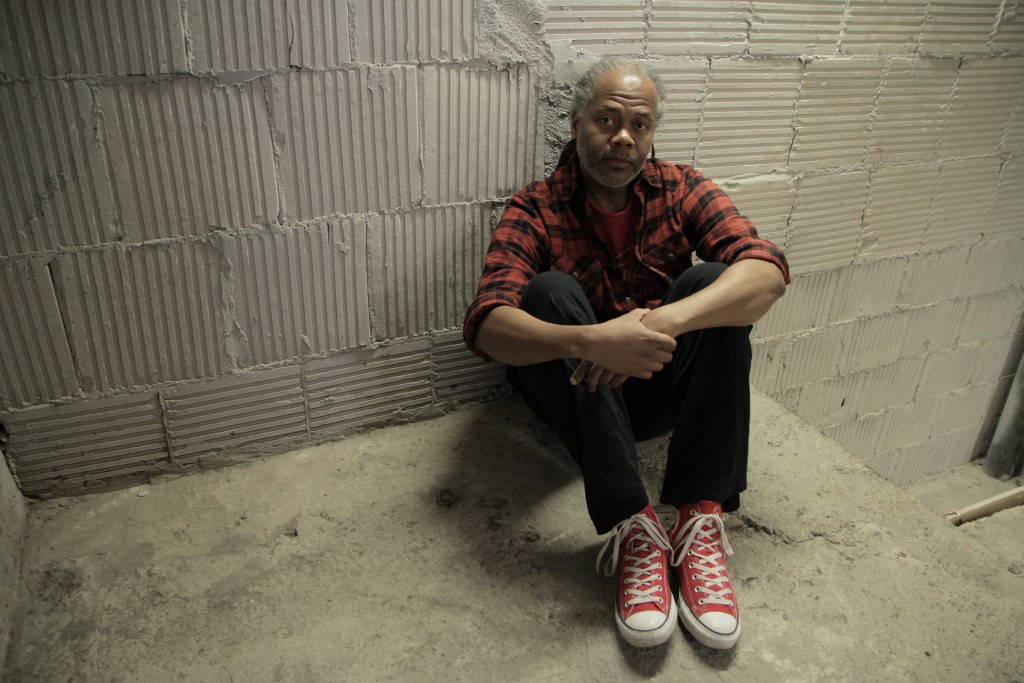Tickets on sale now for Dancing Platform Praying Grounds: Blackness, Churches, and Downtown Dance (Platform 2018), curated by Reggie Wilson
January 17, 2018
Click here for a Platform 2018 Weekly Schedule
Danspace Project’s signature curatorial initiative, The Platform series, was initiated by Danspace Executive Director and Chief Curator Judy Hussie-Taylor in 2010 to provide time and space for artistic and curatorial inquiry. The Platforms were conceived, as she has said, “as exhibitions that unfold over time” often providing a choreographic approach to curatorial practice.
Dancing Platform Praying Grounds: Blackness, Churches, and Downtown Dance emerges from choreographer Reggie Wilson’s ongoing research into religion, race, and, as he explains, “the potential of the body as a valid means for knowing.” Participating dance artists include Same As Sister/Briana Brown-Tipley and Hilary Brown, Keely Garfield, Beth Gill, Jonathan Gonzalez, Miguel Gutierrez, Angie Pittman, Edisa Weeks, and Ni’Ja Whitson. The Platform will conclude with a Danspace-commissioned new work by Reggie Wilson.
“This Platform began with a conversation Reggie and I had in 2014 after seeing his piece Moses(es) in St. Cornelius’ Chapel on Governors Island,” explains Hussie-Taylor in her intro to the Platform 2018 catalogue. “Reggie has engaged with many facets of African diaspora religions and dance. In that context, I mentioned to him an old rumor that traveled from Allen Ginsberg to Steven Taylor to me, that African American worshippers sat in the balcony during the service. I asked former rector of St. Mark’s Church in-the-Bowery (where Danspace Project has been located since 1974), Winnie Varghese, about this a few years ago and she said that it was historically called a ‘slave gallery.’ This became a point of departure for the unfolding conversation with Reggie Wilson that spanned three years prior to the Platform—a conversation that would provoke a deep dive into the over 200-year-old history of the Church, and the known and unknown people and activities that shaped its transformation.”
Over four weeks choreographers, writers, and scholars will engage with Wilson’s questions about race, religion, dance, and the architecture and history of Danspace Project’s iconic home in St. Mark’s Church in-the-Bowery. Choreographers will employ strategies and kinesthetic practices across cultural, religious, aesthetic, and dance lineages to creatively consider the following questions: What has been the relationship between race, dance, and religious architecture in New York City and other US sites? How did civil rights grass roots activism and organization in churches and community centers make way for contemporary models for performance, dance, arts organizing, and presentation?
Built on land purchased from the Dutch West India Company by then-governor of New Amsterdam Peter Stuyvesant, St. Mark’s Church in-the-Bowery was completed in 1799. St. Mark’s Church is the oldest site of continuous worship in New York City, and the second oldest church in Manhattan. Since the early part of the 20th Century, St. Mark’s Church has been home to cutting-edge arts programming for dance, poetry, music, and theater. “Two aspects of St. Mark’s history impact heavily on the present. The first is its relationship with the arts, dating back to the rectorship of Rev. William Norman Guthrie (1911-37). Guthrie revitalized a flagging congregation by bringing the arts into worship and opening up the church to performances of dance, music and poetry. When Rev. Michael Allen became Rector in 1959, he too reached out to the increasing numbers of poets, writers, dancers, musicians, actors and playwrights who had moved to the Lower East Side. The establishment of the St. Mark’s Poetry Project, and later Danspace Project and theater groups at St. Mark’s occurred during his tenure,” according to the St. Mark’s website (stmarksbowery.org/welcome).
St. Mark’s had significant connections to American modern dance history prior to Danspace Project’s founding in 1974. Reverend Guthrie invited modern dance pioneers Isadora Duncan, Ruth St. Denis, and Martha Graham to participate in services. In the 1950s and 1960s St. Mark’s rector, Rev. Michael Allen put the Church at the center of the downtown arts scene as well as the anti-Vietnam War and Civil Rights movements. Current resident arts projects are The Poetry Project, Danspace Project, and New York Theatre Ballet. Former arts projects included Theater Genesis, Richard Foreman’s Ontological Hysteric Theater, and the Incubator. St. Mark’s Church congregation is still known to be socially and culturally progressive, and is the site of important landmarks in social activism, civil, and labor rights.
Danspace will publish a catalogue to accompany Platform 2018. Historical research, personal testimony, original artwork, interviews, and historic photographs will uncover the intersecting ways places of worship have shaped religious, African Diasporic, and postmodern dance practices over past centuries. Contributors include Lauren Bakst, Lydia Bell, Thomas F. DeFrantz, Stephen Facey, Keely Garfield, Judy Hussie-Taylor, Darrell Jones, Prithi Kanakamedala, Kelly Kivland, Cynthia Oliver, Susan Osberg, Carl Paris, Same As Sister (Hilary Brown and Briana Brown-Tipley), Radhika Subramaniam, Kamau Ware, Ni’Ja Whitson, Tara Aisha Willis, and Reggie Wilson. The catalogue, designed by Raja Feather Kelly, and edited by Lydia Bell, Kristin Juarez, and Reggie Wilson, echoes Wilson’s choreographic logic and research methodology that reflect the complexity of time, space, and movement across the African Diaspora. Buy the catalogue here
Visit our calendar for all Platform 2018 events, and buy your tickets now!
